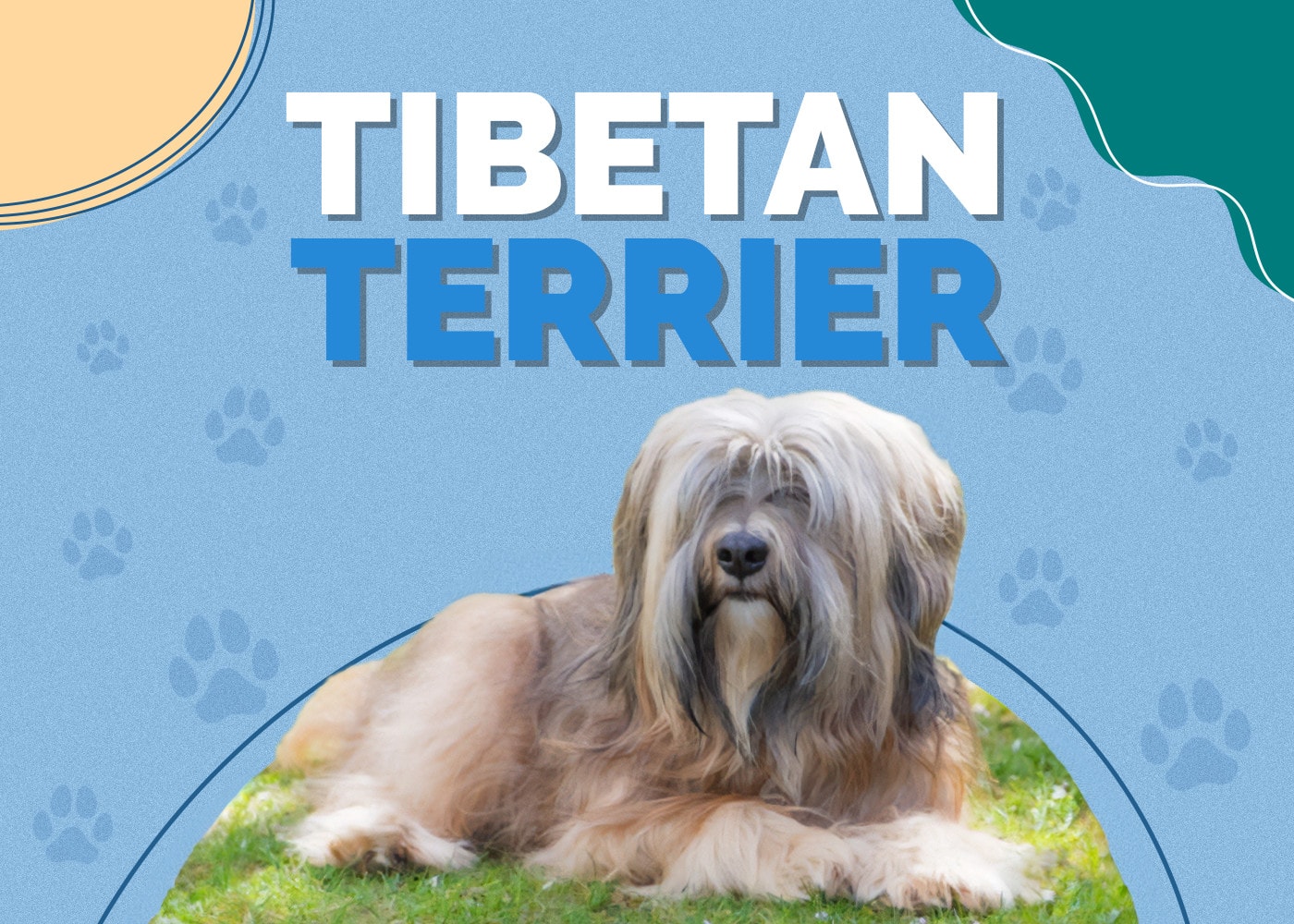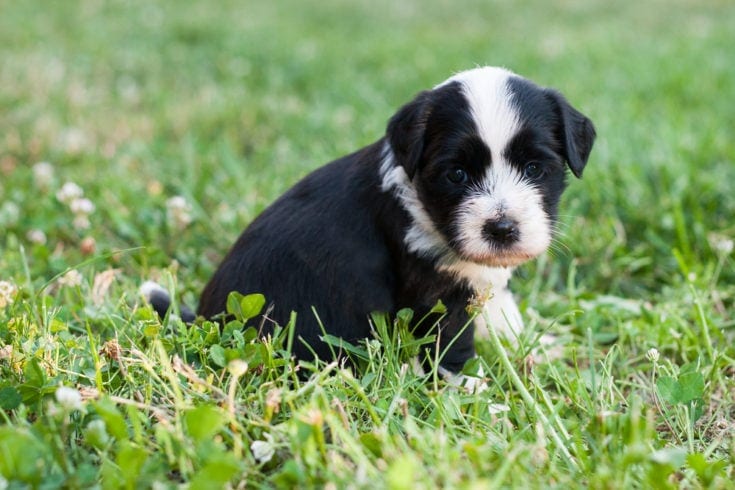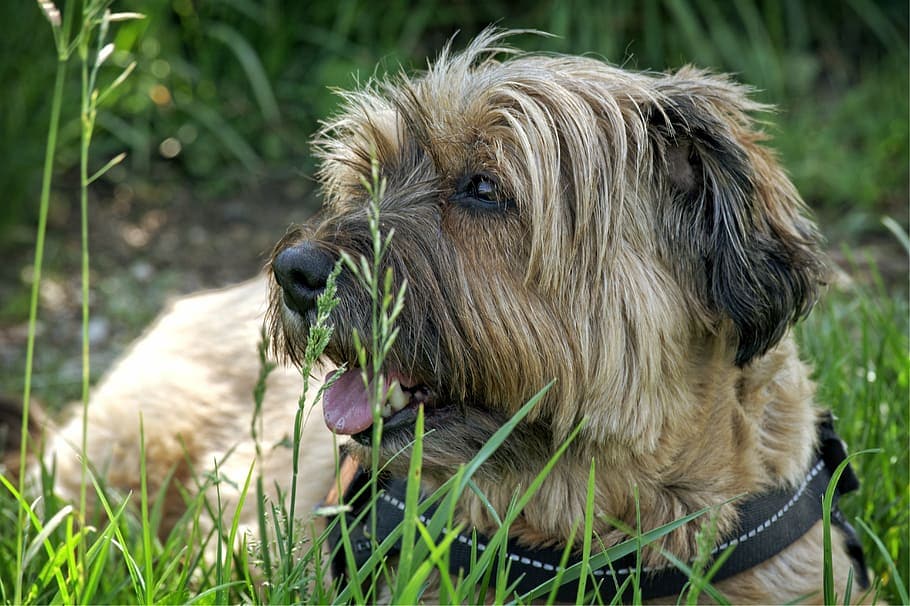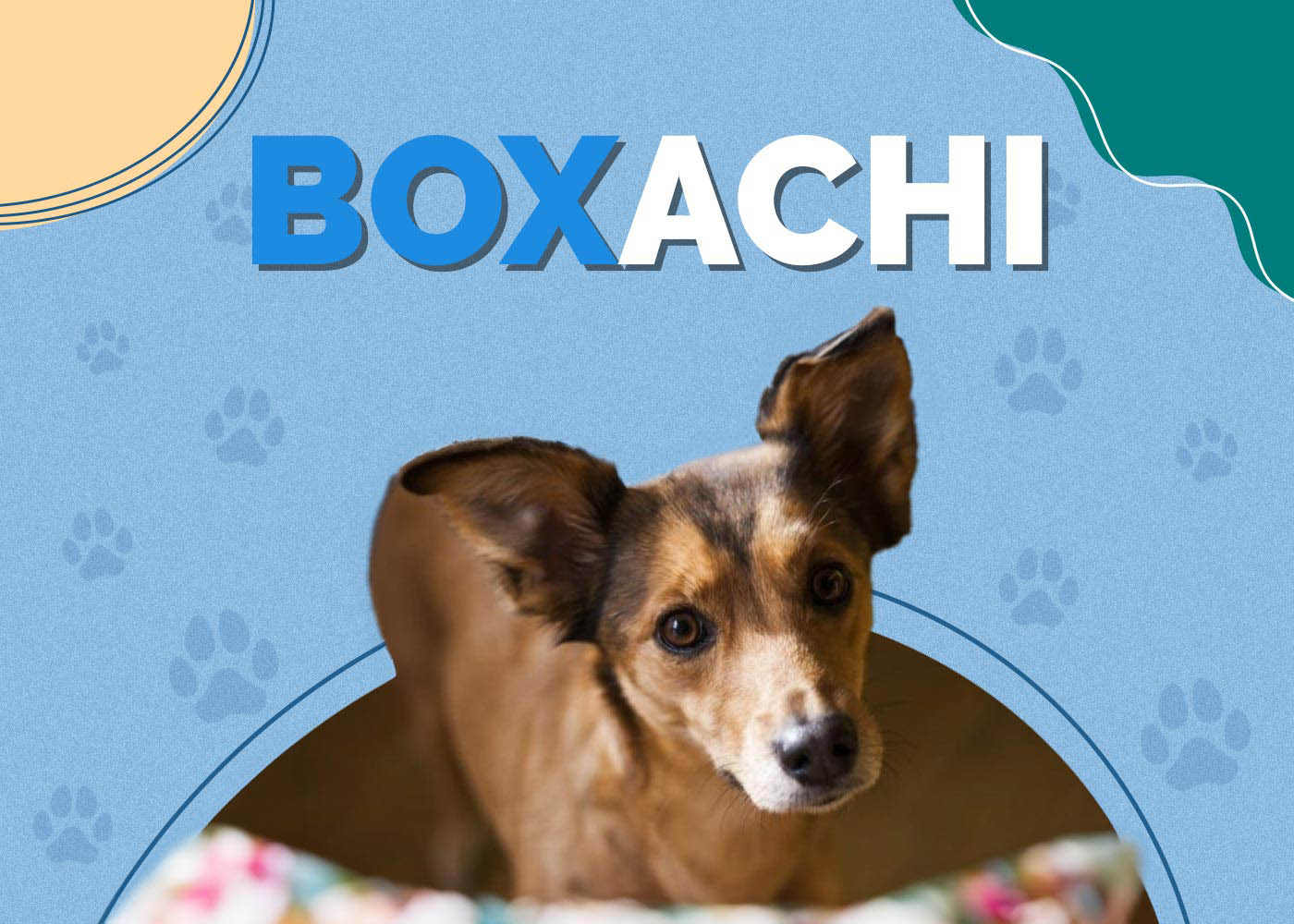Tibetan Terrier Breed Info, Pics, Personality, Puppies & Facts

Updated on

Height:
14-17 inches
Weight:
18-30 pounds
Lifespan:
15 -16 years
Colors:
Black, white, grey, gold, brindle, sable, brown, fawn, red, mixed
Suitable for:
Watchdogs, cold weather, families, singles, couples, apartments, homes
Temperament:
Gentle and affectionate dogs that like to play. Unsure of strangers but loyal and protective of family members
The Tibetan Terrier is a smaller medium-sized dog known for its overabundance of long, thick hair. They usually weigh a little over 20 pounds and have and have large flat snowshoe paws that help it navigate deep snow. It’s a muscular dog with a square build. The hair usually covers the eyes, and the tail curls up over their back.
The Tibetan Terrier is among several dogs associated with Buddhist monasteries, and they have a long history. They are not true Terriers, and that name was applied to them by Western civilization. Tibetan Terriers have worked guarding and herding sheep, and as watchdogs, but they make excellent companions.
Tibetan Terrier Puppies

When you’re looking for a Tibetan Terrier, take your time to find a reputable and ethical breeder. Better breeders will cost more because they use higher quality parents, and may also include testing for the several health problems that can afflict a Tibetan Terrier.
Inexpensive dogs may be the result of unscrupulous breeders that aren’t concerned with the dog’s health. They may even breed these dogs from unhealthy parents willfully, so it is essential to research potential breeders thoroughly before making a purchase. Forgoing the health testing will also reduce the cost of a new Tibetan Terrier, but you may purchase a dog with health problems that aren’t known for many years
These dogs tend to be loyal and will create strong bonds with their human companions. They love spending time with their family, and will be looking to play as much as they can.
3 Little-Known Facts About the Tibetan Terrier
1. Tibetan Terrier often accompanies the Dalai Lama.
2. The Tibetan Terrier is almost 2000 years old.
3. The Tibetan Terrier is known as a luck bringer.
Temperament & Intelligence of the Tibetan Terrier 🧠
Unlike most breeds, The Tibetan Terrier is not a working dog. Instead, this dog is for companionship. Therefore, it enjoys being around humans and is perfectly suited to the task of a best friend. It’s also protective and wary of strangers, so it makes a great watchdog.
Since these dogs do not like strangers, you can expect there to be a small warm-up period as your Tibetan Terrier learns who you are. You can also expect a certain amount of barking when out walking as your dog as it encounters strange people and animals. Socializing them with walks as a puppy can help to reduce this type of behavior.
The Tibetan Terrier does not like to be left alone and can get into quite a bit of mischief if left alone for too long. They are very intelligent and are known to escape crates and cages as well as locked rooms. Because of their high level of intelligence, it’s easy to train them, and they mature more slowly than many other dogs so you can train them longer. These dogs will learn your personality and adapt their behavior accordingly.
Are These Dogs Good for Families? 🏡
Yes, the Tibetan Terrier, makes a great family dog if there are no small children that might knock it over or pull its hair. It will watch over the house and is attentive to the members inside. If there are elderly members of the household, the Tibetan Terrier can often learn to look after them and help them perform certain tasks.
Does This Breed Get Along with Other Pets? 🐶 😽
Yes, the Tibetan Terrier does get along well with other pets. Like most breeds, there is a better chance they will get along with their housemates if they are socialized early in life, but quite often, a short bonding period is all that is required.

Things to Know When Owning a Tibetan Terrier
These are the most important things to consider before purchasing a Tibetan Terrier, separated into several categories.
Food and Diet Requirements 🦴
The Tibetan Terrier requires a diet with high-quality protein, usually from meats, as its first ingredient. Your pet food should also include fatty acids, vitamins, and minerals. Dry dog food is the popular choice, and your grown Tibetan Terrier will require about two cups per day spread out over two or three meals.
Daily Exercise Requirements 🐕
The Tibetan Terrier requires between 30-45 minutes of exercise per day, depending on the individual. Since these dogs are not for working, their activity level was never part of their breeding, and there can be a large difference between one dog and the next in terms of a desire to play.

Training 🦮
The Tibetan Terrier is extremely clever and very intelligent. In many cases, it will be them that are doing the training, and they are well known for coming up with crafty ways to get what they want.
The best way we have found to train your Tibetan Terrier is to stand in front of them with a treat while repeating a phrase like “sit.” When your pet completes the task, give them a treat, and repeat the process a few more times. After a few days, your dog will likely respond to your command on the first or second try.
Grooming ✂️
The Tibetan Terrier has a thick double coat of fur. They have a thick down inner coat that protects them from cold weather. This inner coat will require frequent brushing, but like many other breeds, it doesn’t shed very much and requires surprisingly little maintenance.
The outer coat is long and straight. If not trimmed, it can easily reach the ground. This outer coat also does not shed much but requires regular brushing. You will need to cut it regularly to keep it from dragging on the floor, and you will most likely need to bath the dog often because the fur collects dirt. When bathing, it’s important to make sure your dog is completely dry because the thick inner coat can hold a lot of water that can make your pet cold and uncomfortable.

Health and Conditions ❤️
The Tibetan Terrier can have a long lifespan but is it susceptible to a few serious conditions that we will look at in this section.
- Hip Dysplasia
Hip dysplasia is common in many breeds of dog and is a condition where the hip joint is not properly formed and wears down over time. Hip dysplasia will affect your dog’s movement and can cause considerable pain. Symptoms include declined interest in play and difficulty in getting up.
- Patellar Luxation
A luxating patella is a condition that causes the kneecap to move out of place. As the kneecap moves out of position more often, it wears down and can lead to lameness in your pet. When the knee slips out of place too easily, the leg cannot bear weight. There are many grades of Patellar Luxation, and some pets can live with it for many years.
- Progressive Retinal Atrophy
Progressive Retinal Atrophy is a degenerative disease that affects the photoreceptor cells in the eye. The condition is slow-moving but often leads to blindness. In many cases, night vision blindness occurs before complete blindness.
- Lens Luxation
Lens luxation is another degenerative disease that can affect the eyes of your Tibetan Terrier. This disease attacks the suspension system that holds the lens in place and allows it to focus. If caught early, the vet may be able to remove the lens, but the eye will require lifelong daily care.
Male vs Female
Male and female Tibetan Terriers are quite different from each other, and you may want to consider them before making a purchase. The male Tibetan Terriers tend to be more affectionate than females, and they are easier to train. The males are very food-oriented and can be persuaded easily with treats. Female Tibetan Terriers are much more independent and better suited for homes that are empty at times, or in homes with the elderly.

Final Verdict
We hope that you have enjoyed reading over our in-depth look at the Tibetan Terrier and have learned some new facts about this amazing and ancient breed. These dogs are great family pets as well, and the single person’s ideal companion. If we have helped you decide on purchasing one of these pets, please share this short guide to the Tibetan Terrier dog breed on Facebook and Twitter.
Featured Image Credit: manfredxy, Shutterstock












